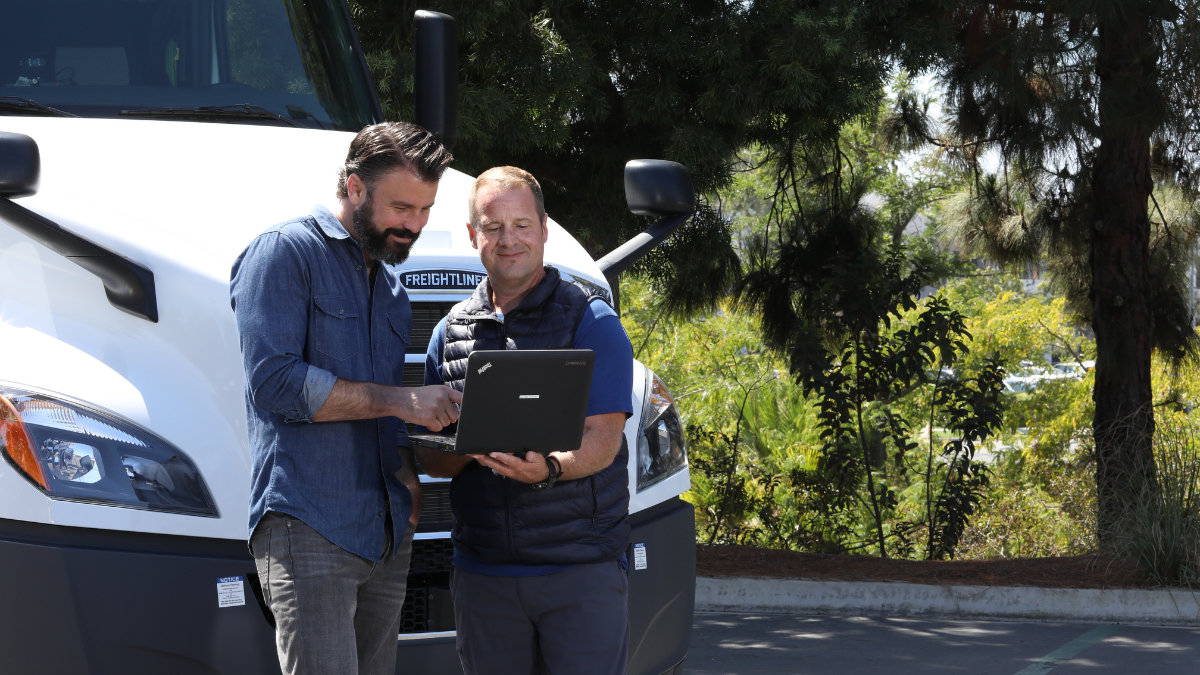Building a great safety culture takes time and effort from individuals at every level of your fleet—it’s an organization-wide endeavor. Coaches are the first line of defense, playing an integral role in setting the standard for safety and guiding drivers on how to change their behavior for the better, day in and day out. That’s a lot of responsibility, but when coaches are successful, the fleet is, too. Safety and productivity increase, while costs and collisions drop.
Coaches are most successful when they have the right tools to support drivers and feel valued themselves. Fleets can communicate this value and motivate coaches, helping to boost morale and retention, by building these six tactics into their safety programs.
1. Leadership is committed to safety.
One glance at the behavior of the company’s executives and it will be clear if safety is a core value at the organization. If it is, safety will not only be a value, it also will be a priority at all levels of the organization—leaving its mark on everything from the company’s mission statement to weekly employee meetings. Driving safety messages from the top will naturally increase employee engagement with the initiatives because leaders, with both words and actions, are emphasizing that this is how our company operates.
Leadership sets the tone on safety by walking the walk and talking the talk. For example, if a trucking company prohibits drivers from talking on the phone while driving, executives shouldn’t be talking on their cell phones at the wheel, either.
When managers show they’re committed to a strong safety culture, employees receive the message loud and clear and take safety seriously themselves. They are more engaged in the safety program and realize the organization values their well-being, which increases retention. Coaches specifically will know that the leadership sees and appreciates their role, helping them feel respected for the hard work they put in.
2. You use data to measure and hold coaches accountable for safety.
When safety is your goal, the burning question is, “How do you know if coaches are successful and hold them accountable in a fair and effective way?” If you’re out to change behavior in the long term and not just put a Band-Aid on the situation, video is your best bet. Vehicle telematics can be helpful, but when combined with on-board video, coaches have the facts to proactively interact with drivers and improve driver behavior before a collision occurs.
Most safety issues, when identified, are treated as training and coaching opportunities—coaches should not be expected to rely on punishment as the mechanism to change behavior. For example, if video reveals a truck driver is falling asleep at the wheel and nearly has a collision, a company with a strong safety culture will have the coach sit down with the driver, watch the video clip together, and try to understand why the driver was falling asleep on the road.
The safest fleets assess the organization as a whole and ask, “What can we learn from this?” And video telematics helps provide those lessons in very conclusive ways.
3. You rely on new safety technologies to continuously improve.
Fleets with the strongest safety cultures never stop assessing how they can become safer, even after they’ve made big strides. According to EHS Daily Advisor, a magazine for safety executives, “to develop a safety culture, an organization must be informed and continually learning. This involves agreeing on ways to analyze incidents and wanting to learn from near misses before they become accidents.”
In the transportation industry, adopters of in-cab safety technologies are likely to have strong safety cultures. For example, by investing in video telematics technologies that can propel fleets to the next level of safety, organizations can protect themselves from liability while demonstrating that they’re dedicated to a safe work environment for all. Plus, coaches are armed with the best tools to guide drivers on safer behaviors, making it easier and more effective to do their jobs.
4. There’s an open environment to discuss safety concerns.
In a strong safety culture, anyone at any level can share safety concerns with others and they’ll be heard. When a fleet just focuses on getting the job done—even if it means cutting corners—it can lead to poor outcomes. The best safety initiatives originate from employees, and coaches in particular, will have great insights on how to improve safety initiatives. But there must be an open environment for employees to share those concerns.
5. Communications are clear and effective.
Hosting weekly or monthly safety meetings for coaches, mailing letters home to family, and emailing daily safety messages can serve as valuable touchpoints that will help you connect with your team while reinforcing safety goals. Many organizations have coaches or other employees who lead safety meetings to increase their level of engagement.
6. The organization cares about the well-being of employees, and it shows.
When a fleet genuinely cares about employees, it is reflected at all levels of the organization. You’ll see things like positive reinforcement and incentive programs in place. Coaches and other employees will have the opportunity to earn rewards—whether it’s public praise for a job well done or physical gifts. And there will be regular visibility of the company’s leadership as they seek to learn about every facet of the business and improve safety at every level. The combination of positive reinforcement, rewards, and leadership support translates into big benefits for fleets, improving both safety and retention in the long term.
Coaches are on the front lines of your organization’s safety culture. By providing coaches with resources, support, and motivation, you are inspiring excellence and efficiency and ensuring your safety program continues to help reduce collisions and save lives.
